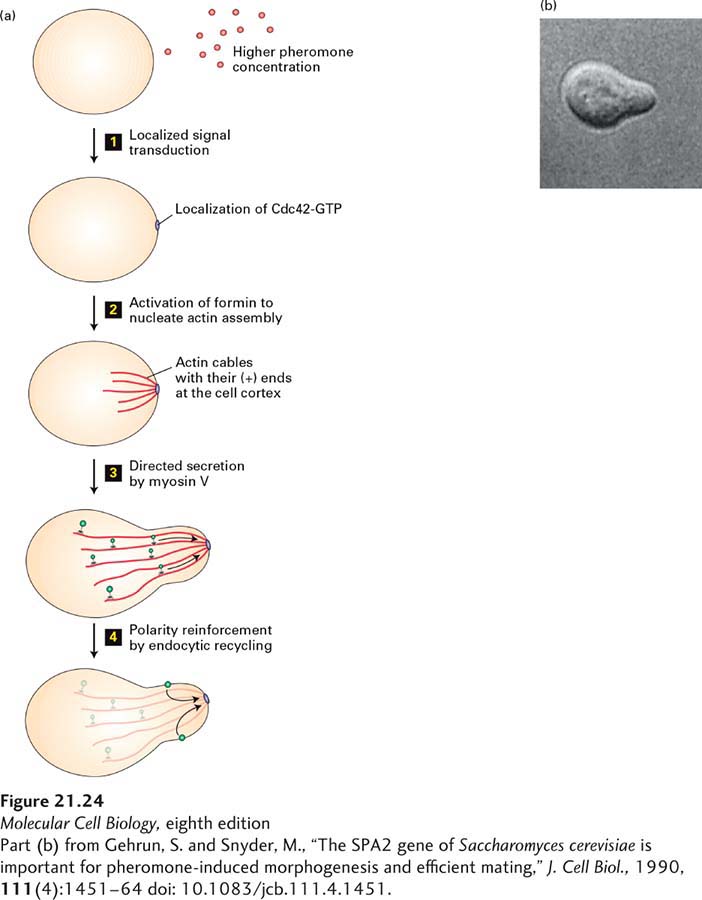
FIGURE 21- 24 Mechanism of shmoo formation in yeast. (a) The haploid yeast cell must grow toward the highest concentration of mating factor of the opposite mating type, so it has a receptor on its surface that signals the location of the highest concentration. This signal induces the localization and activation of Cdc42 to generate a higher concentration of Cdc42·GTP at this site (step 1). The Cdc42·GTP locally activates a formin, which nucleates and elongates actin filaments from this site (step 2). Because formins bind to the (+) ends of actin filaments, the (+) ends are oriented toward Cdc42·GTP and thus the highest concentration of the mating factor. A myosin V motor transports secretory vesicles along the actin filaments, resulting in the growth of the shmoo (step 3). The polarity of the shmoo is reinforced by an endocytic cycle that constantly returns diffusing polarity factors, such as Cdc42, back along the actin filaments to the signal site (step 4). (b) DIC light- microscope image of a shmooing yeast cell.
[Part (b) from Gehrun, S. and Snyder, M., “The SPA2 gene of Saccharomyces cerevisiae is important for pheromone- induced morphogenesis and efficient mating,” J. Cell Biol., 1990, 111(4):1451– 64 doi: 10.1083/jcb.111.4.1451.]
[Leave] [Close]